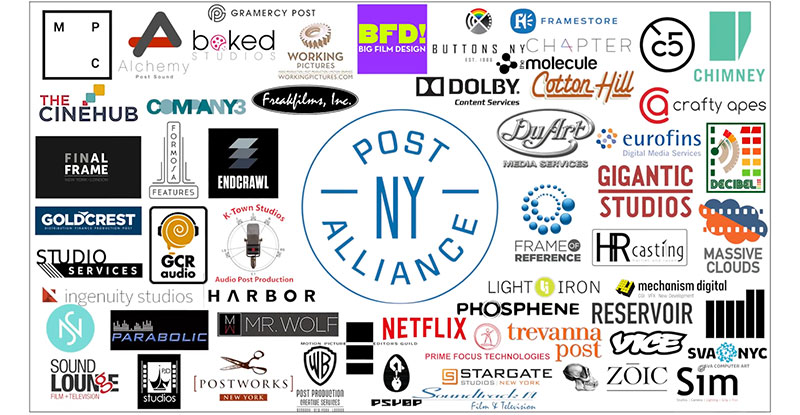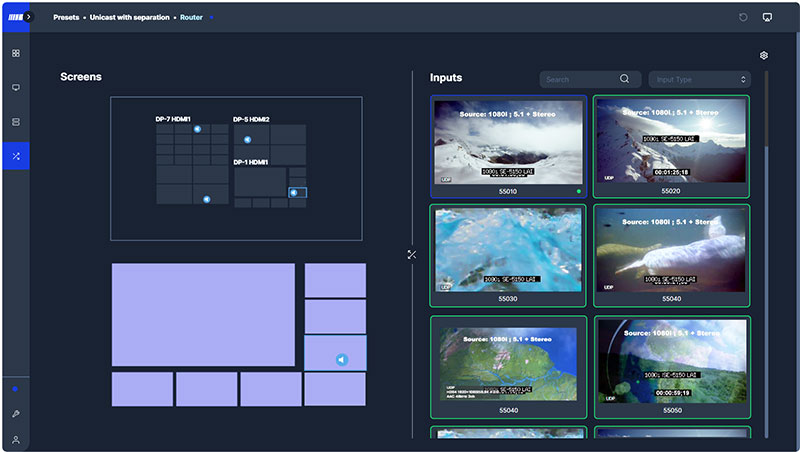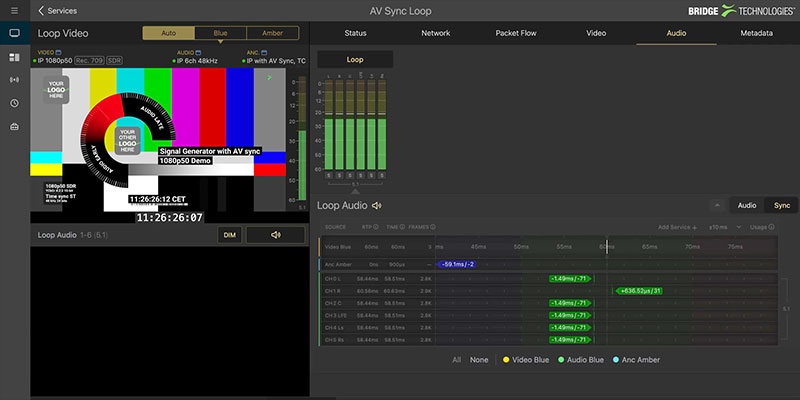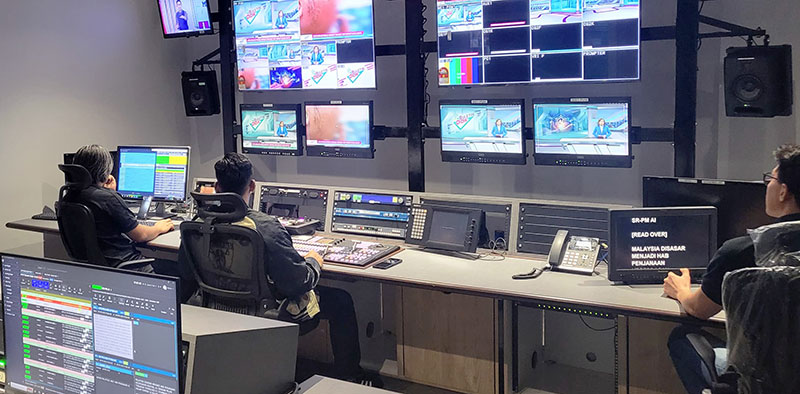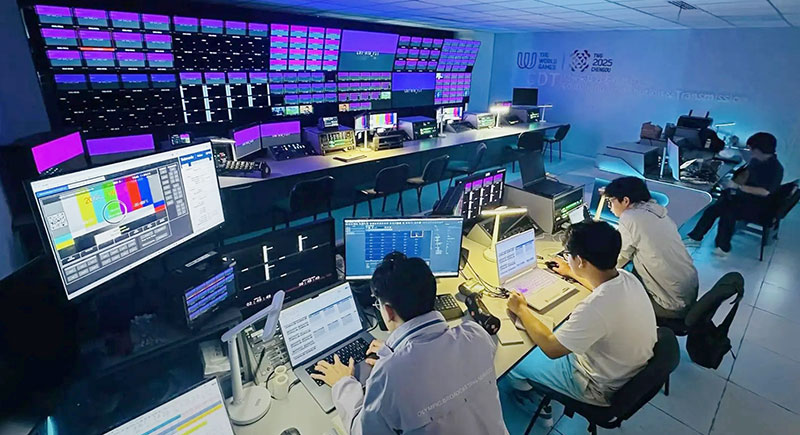In 2024, DMC Production redesigned its remote broadcast workflow for the RallyX Motorsports Championship, using AMPP’s live video production and processing services for the live stream.
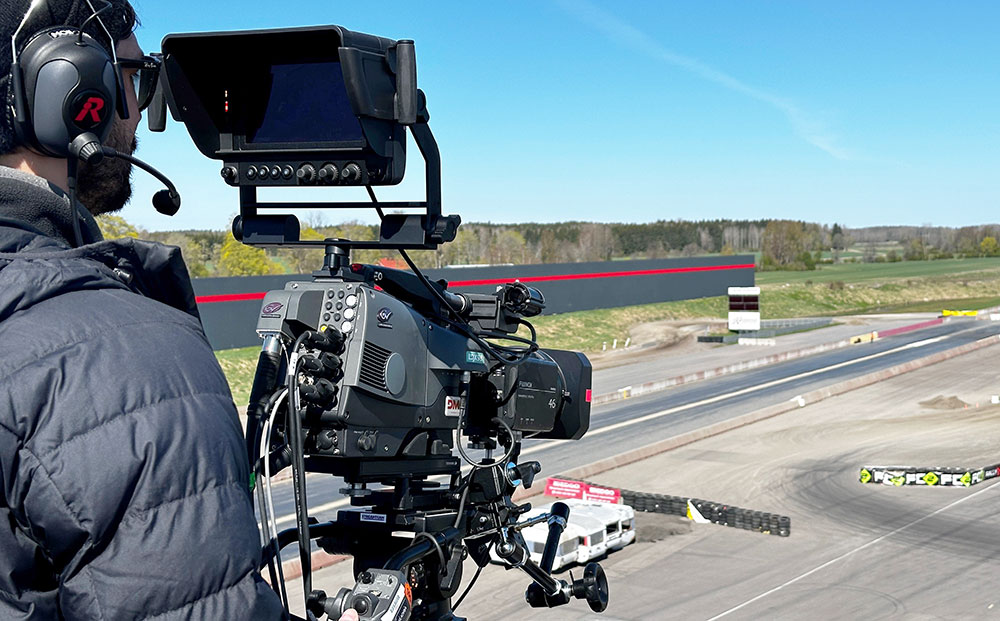
Scandinavian remote video production company DMC Production (DMC) produced live coverage of the 2024 RallyX Championships and streamed the event via YouTube, as they have done for previous RallyX events. Earlier on, DMC would deploy two large OB mobile trucks to each site, equipped with utility, mobile control rooms and operators. These set-ups incurred considerable expense for fuel and travel, and relied on full-sized crews to run.
The RallyX Championships are run in two classes – Supercars (600hp) and Supercar Lites (320hp) – in three formats – Qualifying Rounds, Semi Finals and Finals. In 2024, the DMC team substantially redesigned its live remote broadcast workflow for the RallyX races, using Grass Valley AMPP’s integrated live video production and processing services for the live stream.
In contrast to the full outside broadcast outfit, the AMPP live production server setup is now much more compact and requires only two small vans per site.
Compact Connectivity
AMPP has also solved connectivity challenges. If DMC had simply sent a dozen cameras out to the RallyX site to be switched back at a DMC remote production hub, they would have needed access to ample high speed connectivity to backhaul the camera signals, which cannot be guaranteed at RallyX racing venues. It was therefore an advantage to use AMPP to set up a fully remote workflow. Moreover, it could be controlled over a regular 100 Mb/s public internet connection from the racetrack to DMC’s remote production centre, further reducing the cost of production.
AMPP runs on a cloud-based master control application called Masterpiece X that scales with DMC’s day-to-day requirements and supports regionalisation by driving multiple outputs from one user interface. It gives DMC the opportunity to add new channels, regionalise content and trial new markets.
DMC has many production facilities worldwide, including in Norway, Sweden, Finland, Denmark and The Netherlands. Jens Envall, CTO of DMC Production Sweden, rates AMPP’s scalability and agility very highly. “We can scale up the number of cameras, add production sites and stream program outputs to any of our remote production centres if needed,” he said. “AMPP is saving us time in production, reducing travel time and costs, and allowing us to use our resources, operator skills and talent how and where it benefits us most.”
Remote Switching Options
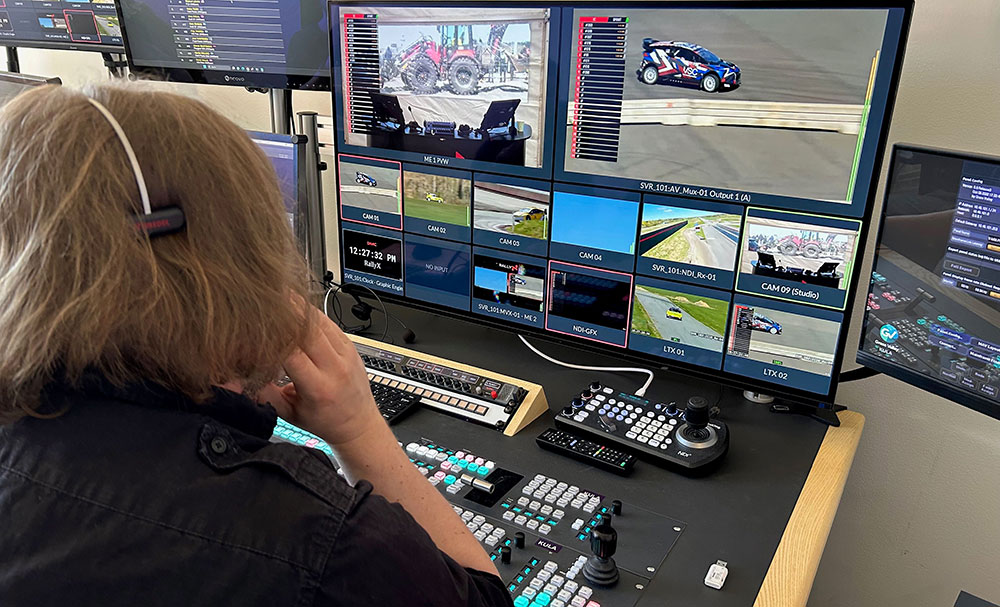
The AMPP system has two switcher options. Live Producer X has many of the high-end creative features available with a traditional production switcher, but is much simpler to operate. Like a traditional production switcher, Live Producer X can create a show with multiple layers of graphics, text, pre-recorded clips and live video sources. It supports image crop, opacity and border controls, and can be used to create complex sequences with custom transitions, resulting in a unique, branded look.
But, unlike a traditional switcher, building shows with M/E layering and macros is not required. To allow producers and other creatives without technical switcher training to be involved, shows can be organised into a set of layouts, scenes and shots, and used for consistent, repeatable storytelling. Creatives can configure looks in advance that match the expected run of the show. User interaction is also supported with an operations hierarchy – elements or actions that are applied at one level also apply to levels below it.
AMPP also has a new native, software-based production switcher Maverik X, purpose-built for the platform and scalable. Based on microservices, it is compatible with Linux native compute and helps control costs by using COTS servers. It does use M/Es and key layers, with multiple key frame animations on every keyer. Its UIs are totally configurable – for instance, a user can define a custom UI to deploy event-based set-ups by clicking a button.
Decentralised Infrastructure
Jens Envall’s DMC colleagues also played pivotal roles. DMC MD Johan Hedblom helped initiate this new process by leveraging AMPP technology to decentralise production infrastructure. Adrian Falck, DMC Production’s Head of Networks, helped configure and plan the technical setup ensuring a smooth implementation of the AMPP solution.
AMPP has a dedicated Streaming protocol that allows users to plug their devices or a cameras into the Internet, making them visible as a source on a global router without setting up IP ports and special addresses. A peer-to-peer streaming protocol, AMPP Streaming can help limit deployment and operation costs by reducing the IT overhead to establish connectivity.

It maintains reliable, low latency streaming in unreliable and insecure environments such as those at the RallyX venues, through automatic retransmissions requests (ARQ) and mandatory packet encryption. With a much broader geographic reach for connectivity over WANs and LANs, users set the required specifications in terms of encode formats (HEVC, H.264), bit depths, resolution, SDR or HDR and bitrate. The protocol also supports tally, alpha channel metadata and time-stamping to align multiple streams.
High Availablility
AMPP has a helpful feature that helps ensure availability, called AMPP Hub. It can temporarily mask a loss of connection with the cloud platform by maintaining local functionality. It requires a Linux-based server connected to the local network. Commands from user interfaces connected to the local network do not go to the cloud but are immediately redirected locally. Remote operators without access to the local network interact with the cloud instance.
This way, if there is a temporary break in internet service, the server continues to function. Even without communication to the cloud, all running workloads remain. While no system changes can be made from the time connection was lost, the local creative team can continue to produce a show. Remote team members will still have access to the cloud instance but of course will not see local work until communication is restored.
Considering the cost-efficiency, quality and sustainability demonstrated by AMPP for RallyX, DMC plans to use AMPP for various other remote high-profile sports and entertainment productions in the future. www.grassvalley.com





